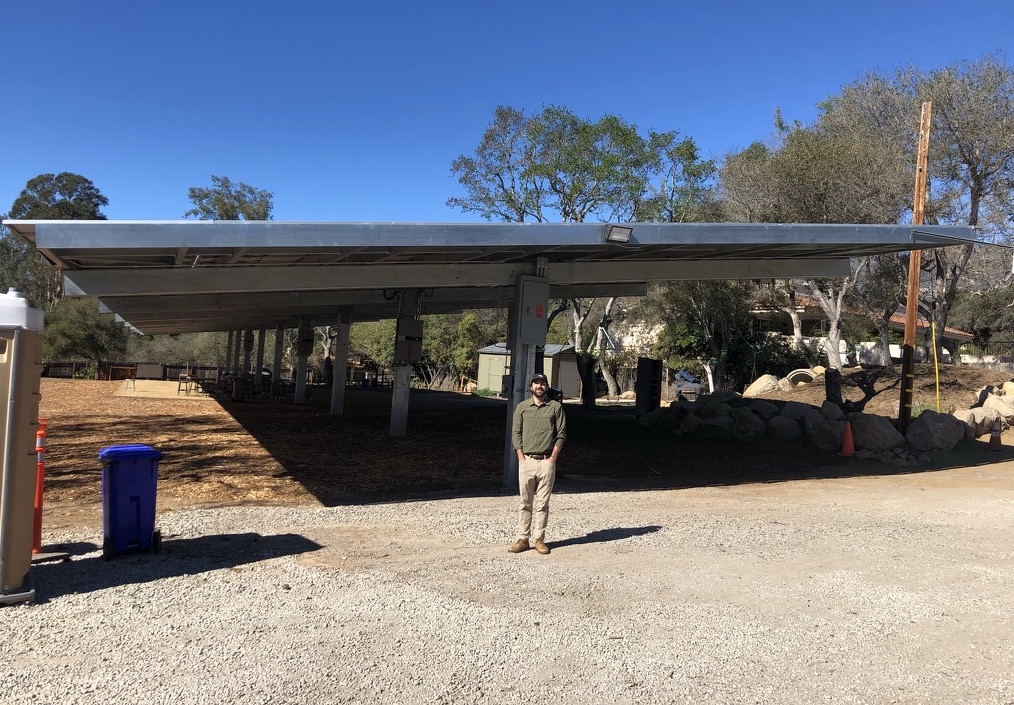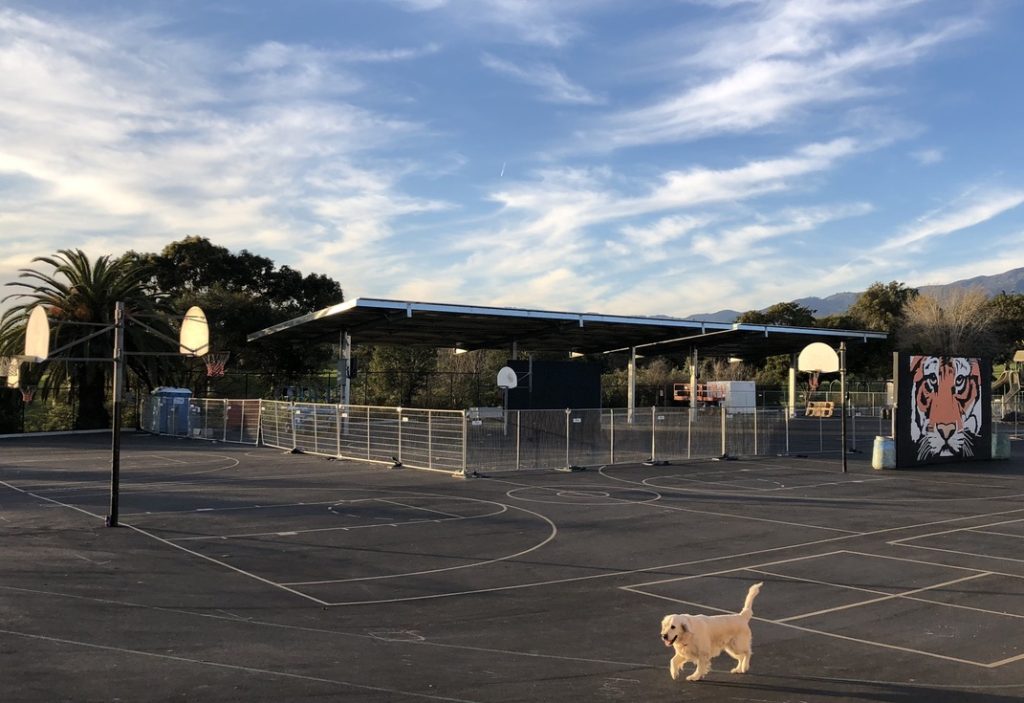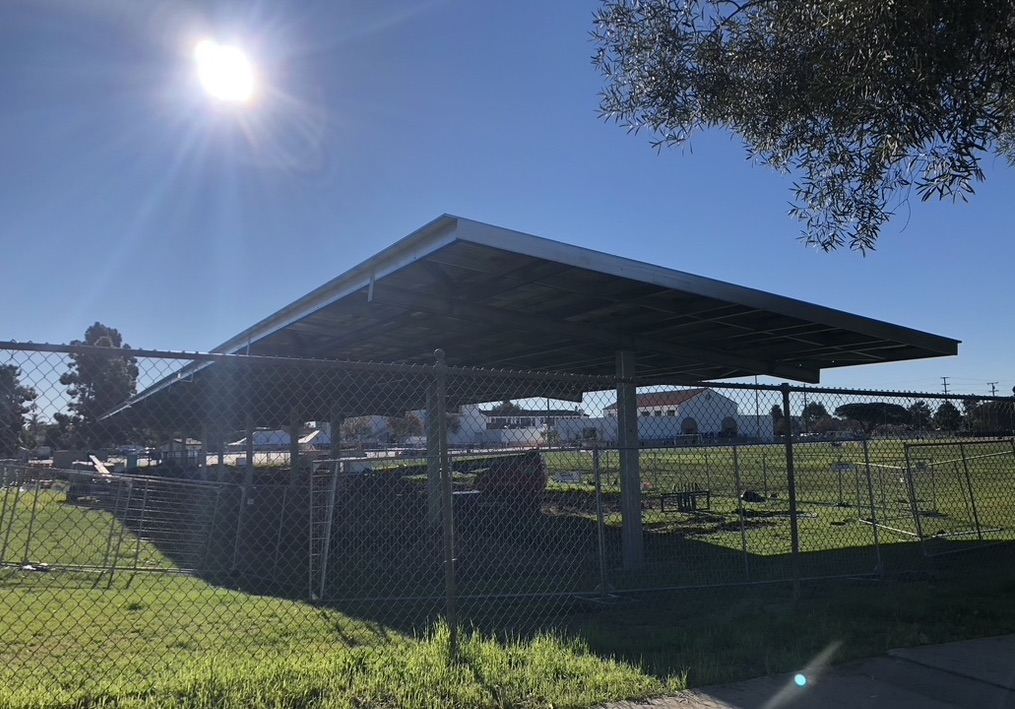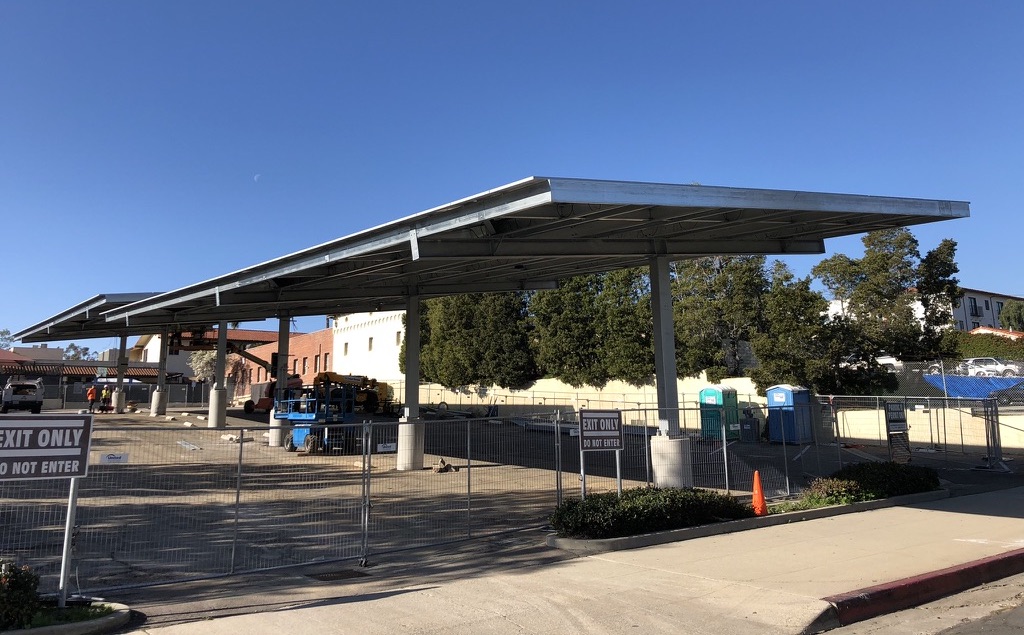Clean Coalition: Finding Creative Solutions to Renewables-Driven Energy Resilience

Last summer, just a couple of months before Montecito Journal’s 2nd annual The Giving List book was published, Clean Coalition’s work to stage a Community Microgrid in Montecito – a first step toward establishing renewables-driven energy resilience for the vulnerable area – was still largely in the planning stage. The goal to establish individual Solar Microgrids at three critical community facilities was still just that – a goal.
Fast forward less than six months and the first of those microgrids is not only constructed but also online and operating at Montecito Union School (MUS), providing a clean local energy resource that drastically reduces carbon footprint and ensures the ability to keep the lights on and serve as the primary emergency sheltering site in the event of a catastrophe that knocks out Edison’s power lines.
It’s a tangible and concrete consequence of the Clean Coalition’s Montecito community microgrid initiative, said Craig Lewis, the founder and executive director of the nonprofit.
“It’s been commissioned and it’s fully operational, so it’s pretty exciting,” Lewis said, quickly pointing out that in addition to furthering climate action goals and providing a measure of energy resilience in the event of emergencies, the structure also serves a third purpose. “It provides shade for the kids. There’s little lunch tables underneath the canopy where they can gather. Obviously, it’s a very significant solar installation, but it’s cool that it provides a lot of comfort and shade to the kids.”
The MUS solar microgrid actually operates at what’s called Net Zero for the campus, Lewis explained, with the structure providing more energy than the campus needs during the daytime thereby pushing extra energy out to the grid and pulling energy back in during nighttime use. On average, the solar array is set to provide as much energy as the campus uses over the course of the year.
That formula for clean, renewable, safe, and independent energy in the first stage of the Community Microgrid will next go online at Montecito Fire Protection District (MFPD) headquarters and primary fire station, an even more critical site that houses the majority of Montecito’s firefighting resources.
“Construction is supposed to start any day as a big solar parking canopy and take less than a month, so it will also be functional very soon,” Lewis said. It’s another step in a plan that came into focus in the wake of the Thomas Fire and Montecito debris flows four years ago that came perilously close to burning down the only transmission lines into the region known as the Goleta Load Pocket, which would have plunged the area into extended darkness.
Clean Coalition is also leading the charge on getting solar into 14 of the Santa Barbara Unified School District’s sites, three of which are ready to go and awaiting only a final electrical approval to start providing energy to their campuses. One in particular fills the nonprofit’s ED with a lot of pride: the solar shade structure on the playground at Adams Elementary.


Sporting fields shade structure at Santa Barbara Junior High School 
Solar parking canopy for the Solar Microgrid at the SBUSD Central Food Warehouse
“That’s where I went to school in my early days, and I can still remember how this playground used to be a shade desert. You’d be out there just getting baked by the sun,” said Lewis, who grew up in Santa Barbara, moved away after high school for college and career and returned in 2018 right after the fire and flood to focus on bringing renewables-driven resilience to the area he loved in his formative years. “That’s when I realized that the Santa Barbara region is super grid vulnerable and needed some creative solutions. I wanted to make sure that my hometown has the kind of protection it needs. I’m fighting to get that for every community, but definitely my hometown.”
Lewis and his organization had a lot of help in getting the Santa Barbara Unified School District project approved, with special credit going to what he called Clean Coalition Champions school board member Laura Capps, philanthropist Sara Miller McCune, and former SBUSD superintendent Cary Matsuoka, plus an honorable mention for Rinaldo Brutoco, a long-time energy visionary and Clean Coalition collaborator.
But despite the SBUSD’s and MUS’s shining example, much more work is yet to be done here in town as well as around the state to ensure renewable-energy resilience. Which is why Clean Coalition still needs funding and support to continue its work of providing the vision to get parties aligned in the goal and motivation to actually move forward with the solar microgrid projects as well as facilitation with technical, feasibility and implementation aspects as well as advocate for changes in rules and regulations that can limit the viability of projects.
“We need funding to move our Goleta Load Pocket Community Microgrid forward,” Lewis said. “What we need altogether is fifty Santa Barbara Unifieds, places like City College and out at UCSB, and at a bunch of large commercial properties out near the airport. Every dollar goes to facilitate these solar and storage projects that will get us to the full regional solar-driven resilience that we’re ultimately aiming for. Every project gets us closer to that magic number of megawatts.”
Clean Coalition is located at 1800 Garden Street. Visit www.clean-coalition.org or contact Executive Director Craig Lewis at (650) 796-2353 or email craig@clean-coalition.org.







You must be logged in to post a comment.